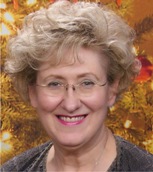This blog series provides readers with insight on the valuable content that will be shared at the upcoming Career Clusters â„¢ Institute. Guest bloggers are among teachers, faculty, researchers and other experts that will present at the national gathering in Washington, DC in June.
 Sandy Mittelsteadt is president of her own company, Zayn Consulting. Zayn Consulting is a company that specializes in connecting businesses to education. Before developing her company, Sandy was the Executive Director of the National Career Academy Coalition. She is also the co-author of The Career Academy Toolkit and Sticky Learning. Through the years, Sandy has taught at virtually every level—from preschoolers in Saudi Arabia to high-risk youth in Missouri.
Sandy Mittelsteadt is president of her own company, Zayn Consulting. Zayn Consulting is a company that specializes in connecting businesses to education. Before developing her company, Sandy was the Executive Director of the National Career Academy Coalition. She is also the co-author of The Career Academy Toolkit and Sticky Learning. Through the years, Sandy has taught at virtually every level—from preschoolers in Saudi Arabia to high-risk youth in Missouri.
Looking for ways to turn your classroom into a student-centered, active learning environment? Wanting to connect the academic concepts you teach to real-life experiences and opportunities your students understand and value?
All teachers have had their share of students who manage to memorize enough facts to pass a test and then walk out of the classroom with little retention of the concepts they just “learned.†Needless to say, these students are also clueless as to how this knowledge fits into the overall scheme of things in the real world. In days gone by, these students might have been chided for learning in such a way that knowledge “went in one ear and out the other.â€
Sticky Learning, on the other hand, encourages learning that lasts for a lifetime. It introduces an innovative blend of several tried and true and educational strategies:
- It’s integrated curriculum, but more…
- It’s action-based inquiry, but more…
- It’s discovery learning, but more…
- It has real world application, but more…
Learn how to plan and implement integrated learning with action-based inquiry, discovery learning, and real world application. This presentation will give successful models suitable for individual, team, academic, and Career Technical Education (CTE) applications and supply examples how to actively engaged students in discovering knowledge and skills.
Sticky Learning prepares students for success in the real world. Although it will help students to be successful test-takers, its aim is to spark student curiosity and energize classrooms. There is a subtle, but powerful, shift from “what†students need to learn to “how†they acquire and apply knowledge. Quite simply, students learn how to learn. They come to understand “why†they benefit from broadening their horizons beyond classroom walls.
Sticky Learning is active, purposeful, contextual learning.
Attend Sandy’s Sticky Learning Pre-Session, and receive her book entitled, Sticky Learning. Sandy will walk you through the eleven chapters of this “Make It Real Planning Guide for Engaging Students in Project-Based Learning†and you will leave with at least one excellent generic project-based unit with an economic theme that you can immediately teach in your classroom. Sandy will also guide you to Web sites that contain quality project-based units.
Add this Pre-Session to your Institute experience now! If you have already registered for the National Career Clusters™ Institute, you can still sign up for Sandy’s Pre-Session. Find out more
Ramona Schescke, Member Services Manager















